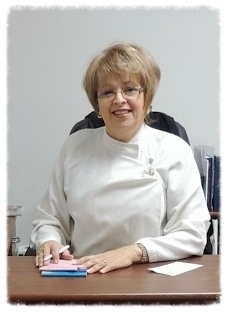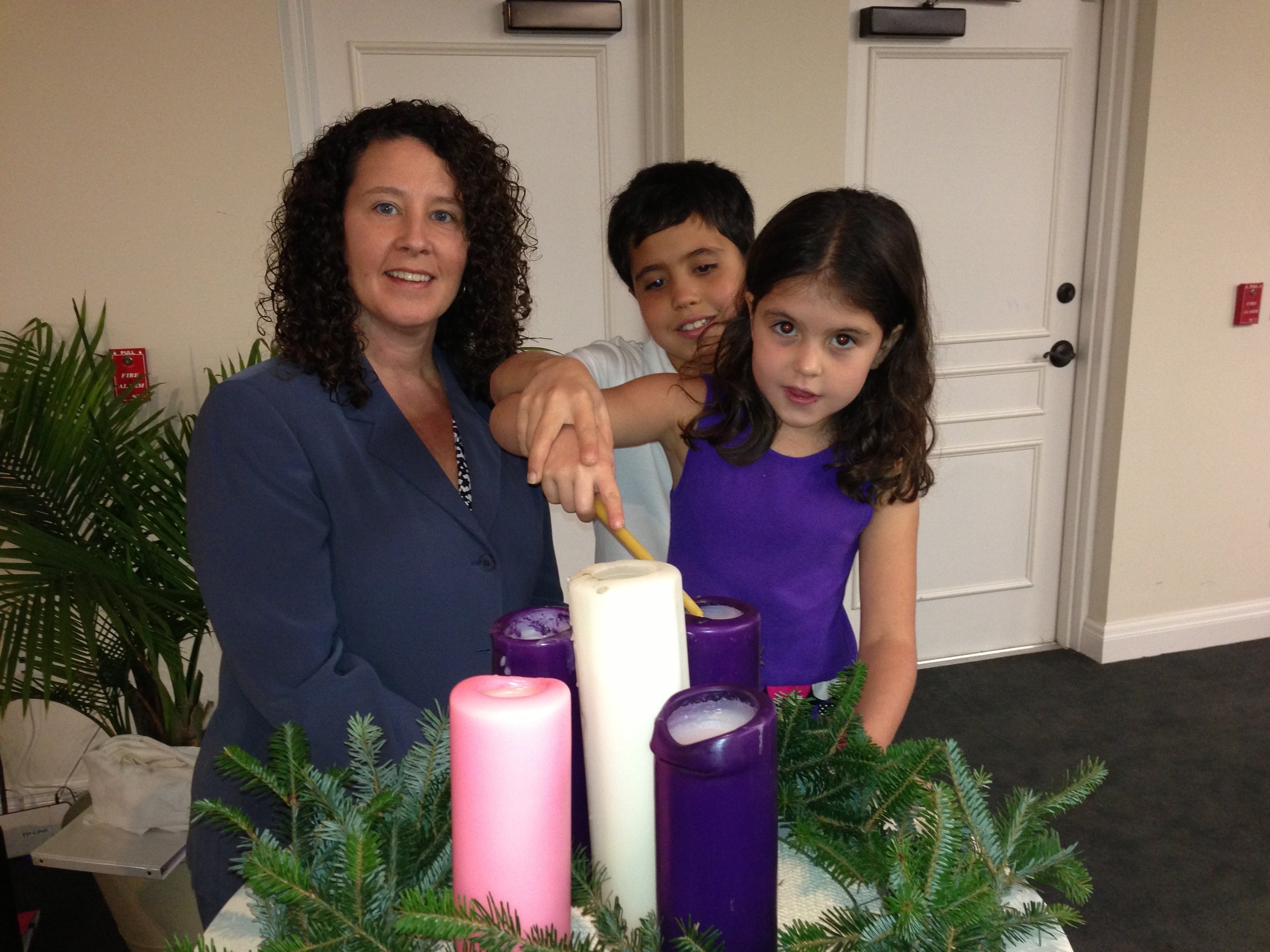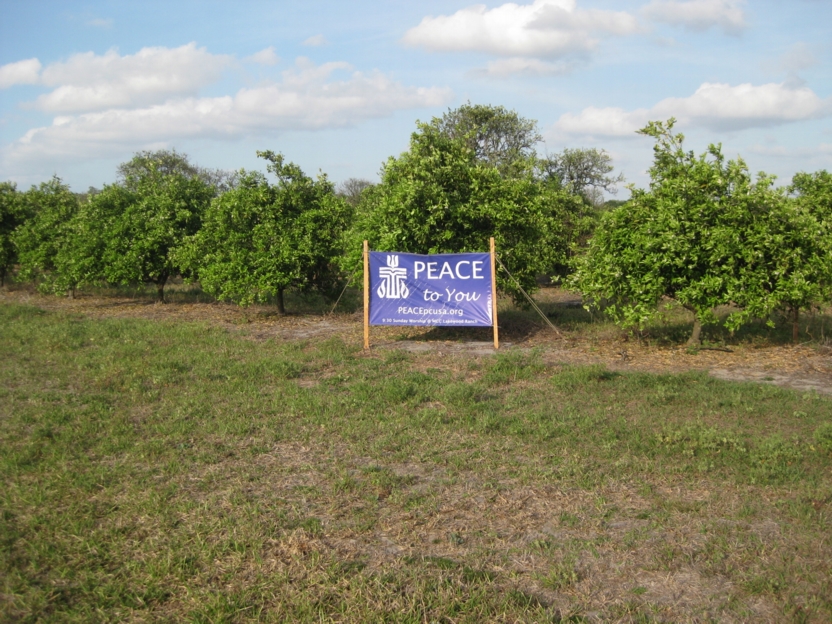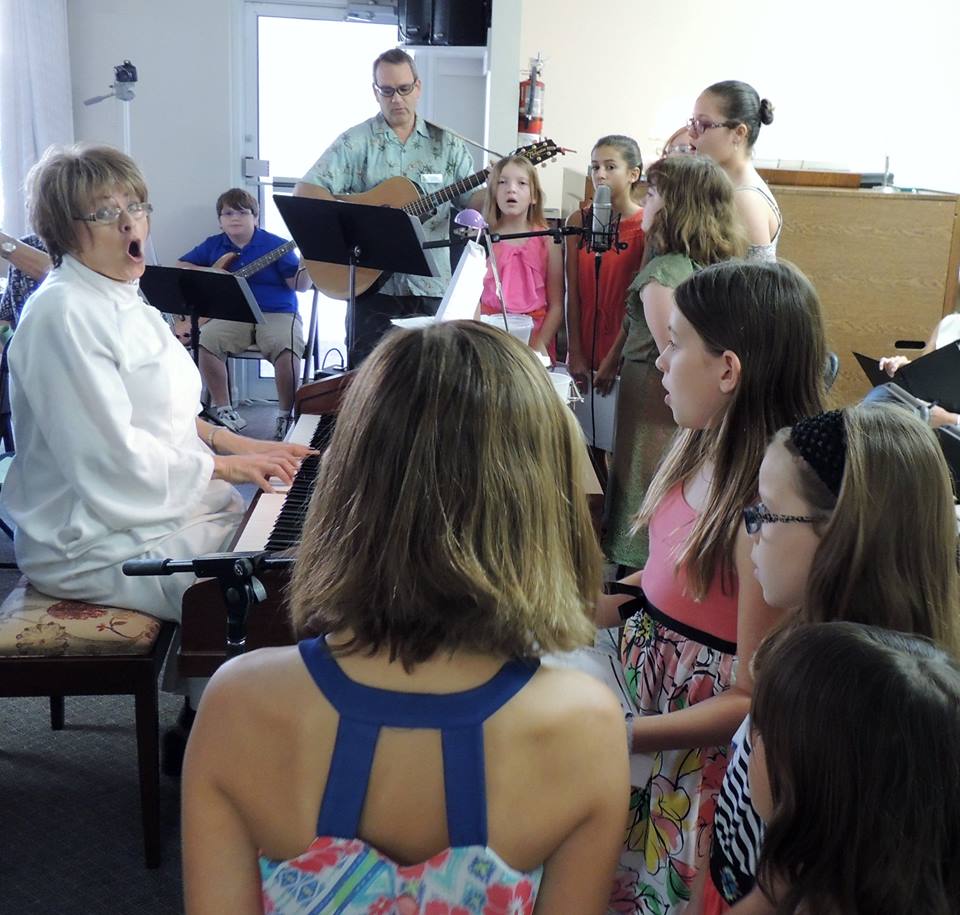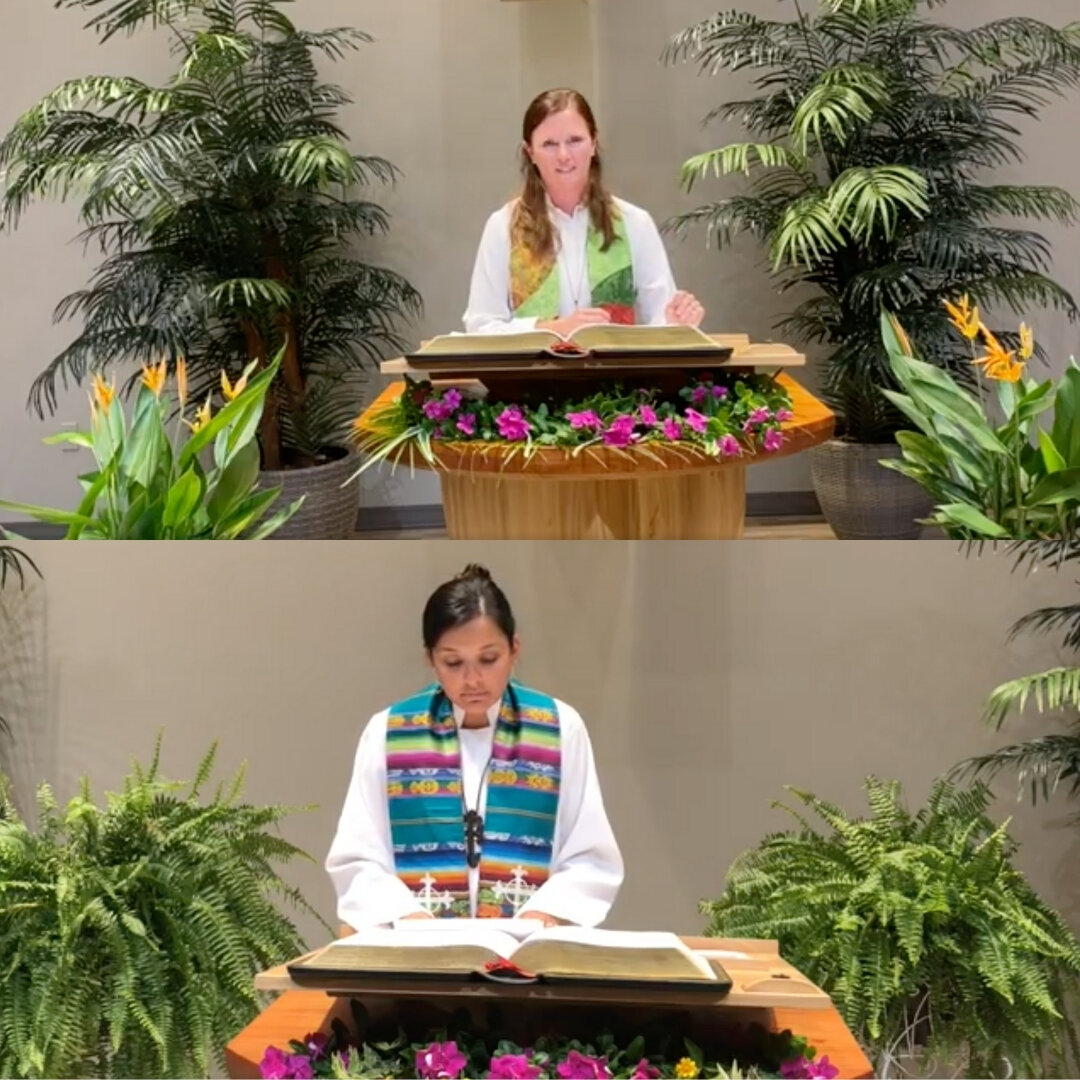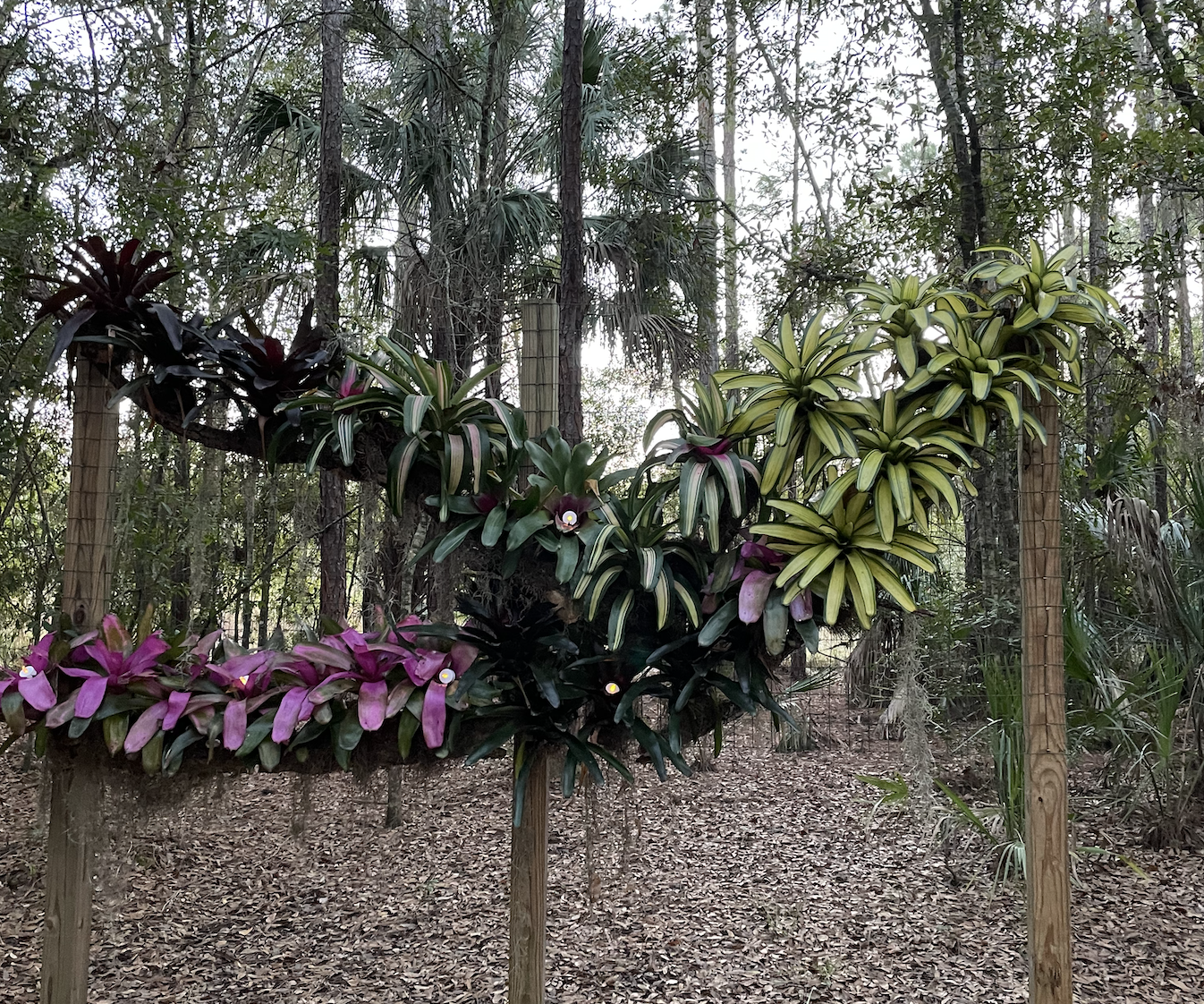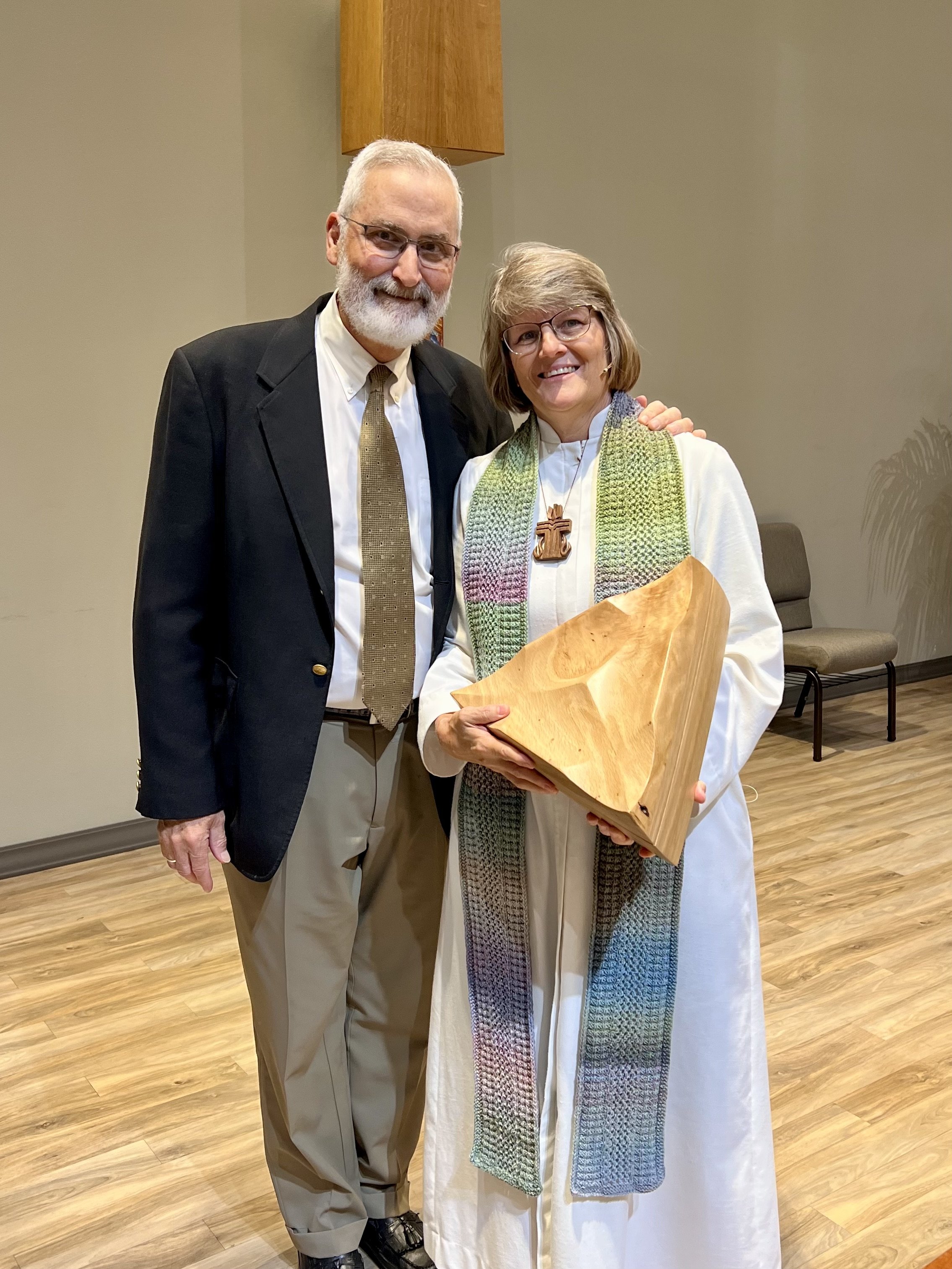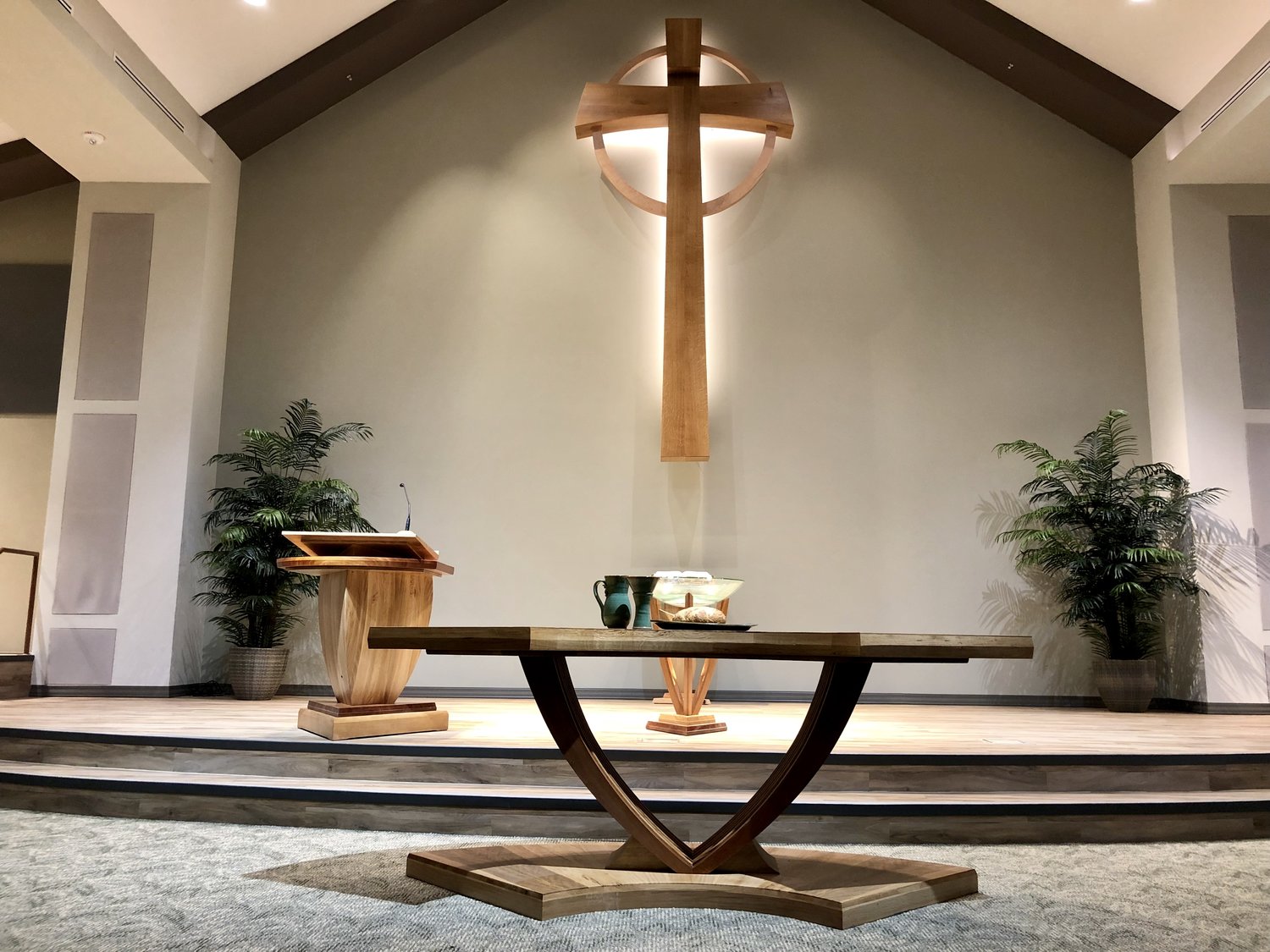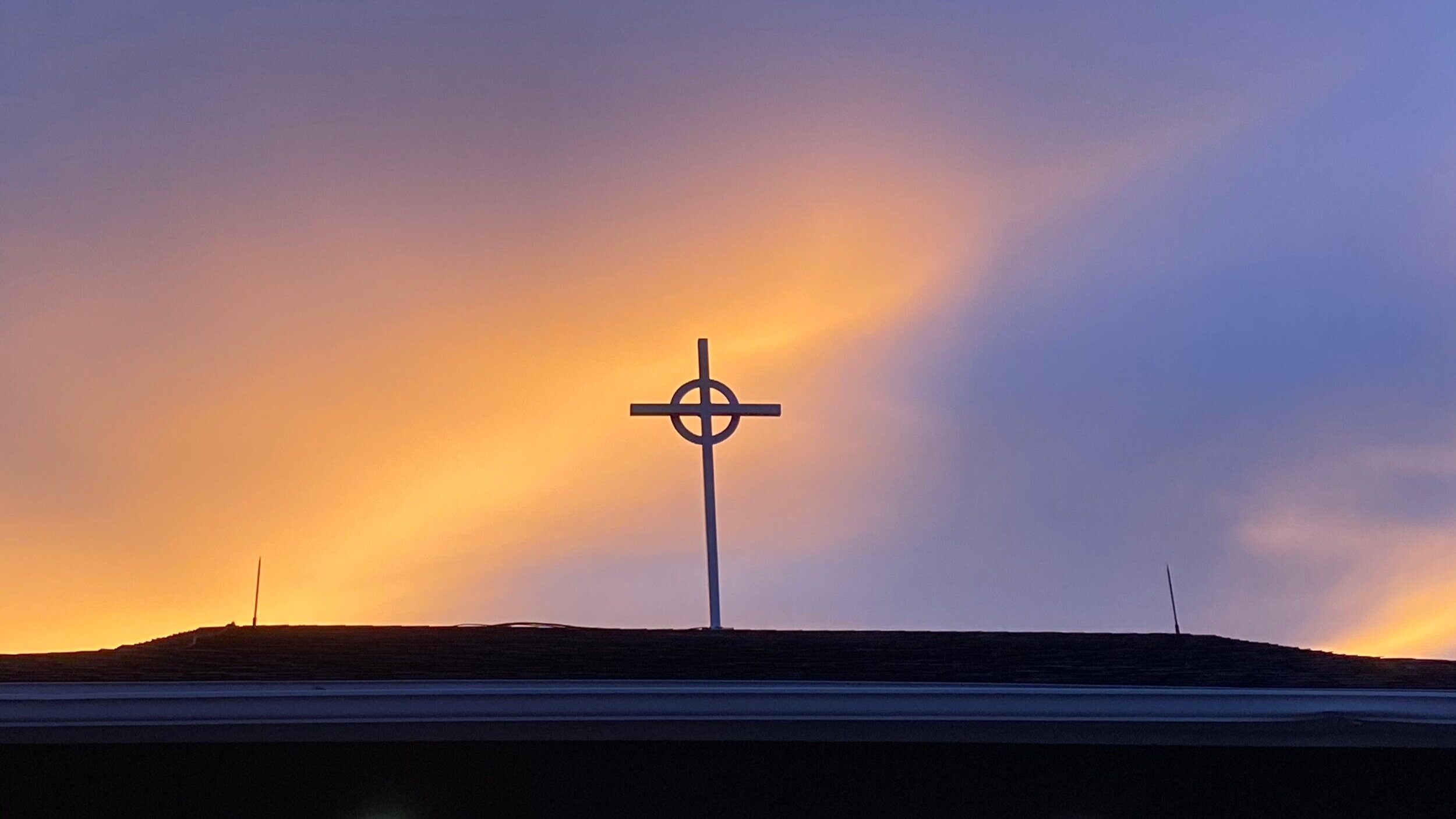
A Timeline of Growth for Peace Presbyterian Church
PEACE PRESBYTERIAN CHURCH HIGHLIGHTS
2003
PC(USA) church sought for Lakewood Ranch
Rev. Chris Curvin, Steering Pastor
Met monthly as “New Faith” at Out-of-Door Academy
Steering Committee of 6-8 people
2004
Identified Partner Churches
Met bi-weekly at Living Lord
Grant request to General Assembly
Pastor Nominating Committee
Church Information Form
First Website
2005
Rev. Elizabeth Deibert called as Organizing Pastor
First Ministry Teams
25 people present at Sunday Nights at Living Lord
Defining Core Values
“Peace” name chosen
Christmas Worship with Beth-El at Wimauma
Godly Play begins with two children
2006
Sunday AM at Manatee Community College with 40-60 people
Judi Creneti, Joe Sardo, Donna Smith, Damaris Luna are employed part-time!
Mass mailing to 15,000 homes
Launch on Palm Sunday & Easter
First Mission Statement
First Baptism
Habitat for Humanity and Hurricane Relief
Church Community Builder used
2007
Gia Havener new Music Director
Men’s Prayer Group
Halloween Food Drive and Angel Tree
Peace-in-the-Park Day Camp
First Wedding and first Memorial Service
Good Friday & Christmas Eve in the park
Pledge 10% or more to mission… always!
Weekly News emailed
2008
Rev. Tricia Dillon Thomas called as Youth Pastor
“The Peaceable Kingdom” = First Musical
Summer Camp at Cedarkirk
Youth Fellowship begins
Beth-El Mission food pantry support
First land purchase on Lorraine Road!
2009
First Adult Baptism and Teen Confirmation
Faith-Mission-Vision Retreat at Northminster
Tone chimes donated
First Spaghetti Supper and Pancake Brinner
Children’s Choir begins
Peace chartered in October - 100 people of all ages!
2010
Greek Dinner and Annual Meeting
Building Vision and Retreat at Risen Savior
First Seminarian from Peace!
“Godspell” - second musical
Family Promise
Peace moves to MAR in September
First Advent Service of Hope
Peaceful News published quarterly
2011
Stephen Ministry of Caring added
Financial independence!
New gifts to the Building Fund
Parents’ Night Out and Dinner Groups
Mega Montreat Youth - middle and high
Faith and Film nights grow
Feasting on Gratitude Dinners
Building a Dwelling Place for God, Becoming a Sanctuary of Christ’s Peace
A Narrative of God’s Providence through New Church Development
Christians worship God anywhere and everywhere! For a group of Christians in southwest Florida, these words certainly rang true as we moved from place to place. The vision for a Presbyterian Church named “Peace” began around a kitchen table in Lakewood Ranch, a fast-growing 31,000-acre planned community in southwest Florida, adjacent to Sarasota and Bradenton. Around a table, the Holy Spirit breathed life into a new Christian community, united in weekly celebration of Word and Sacrament, committed to the Service for the Lord’s Day, and enlivened by musical integrity in varying expression. At this table began real conversation about the struggle for human dignity, the challenge of following Jesus, and our willingness to suffer with the world in humble service.
After meeting in a neighborhood Lutheran church (ELCA) on Sunday evenings, the congregation was called to worship for several years in a tiered college auditorium with giant central screen and built-in swivel-chaired computer tables, quite the source of entertainment for wiggly children and restless teens. Each week, signs were planted at street corners while musical equipment, paraments and pottery, rocking chairs for the nursery, and Godly Play curriculum were unloaded and reloaded from a storage trailer. We were grateful to find 100 courageous followers of Christ. Officially chartered by the Peace River Presbytery in 2009, the congregation began regularly singing its lyrical mission statement in a round:
““Our mission is to make God known, by growing as disciples of Jesus Christ, building a community of peace, and caring for the needs of others.””
The people of Peace never doubted the Avery and Marsh children’s song: “The church is not a building, the church is not a steeple; the church is not a resting place; the church is a people.” In 2010, the congregation moved from the college to a conference center with three giant screens, where meeting rooms were available all week for choir and children’s learning centers could be left set up for the following week. This move especially pleased the pastor’s four teens who had grown weary of Session meetings, choir practice, faith and film evenings, and even Ash Wednesday services in their living room. Meanwhile, charter members were developing close friendships, meeting regularly in each other’s homes, living and singing robustly, “I am the church! You are the church! We are the church together!”
The Directory for Worship’s section on space reminds us:
“The first Christians worshiped at the temple and in synagogues, homes, catacombs, and prisons. The important thing was not the place, but the gathering of Christ’s body—the people of God—and the presence of Christ among them in Word and Sacrament. Later the Church began to build special places to meet for worship. To this day, space for Christian worship is primarily established by the presence of the risen Lord and the communion of the Holy Spirit in the gathering of the people of God.”
The charter members of Peace knew that if we brought in the Bible, baptismal font, communion ware, and musical instruments, then we were ready to worship. We simply needed to rearrange chairs to make the Word and Sacrament more welcoming. Like the Hebrew people moving the tabernacle, we set up the “sanctuary” every Sunday for the first seven years of worship in window-less, screen-dominated auditoriums and conference rooms. This provoked the use of high quality, art-oriented visuals to complement the liturgy on built-in screens, which became our “dynamic stained glass windows.” We came to appreciate the way art both ancient and modern helped us to see Christ in many forms and faces. Used reverently, these screens inspired our worship in many ways, surprising some who had considered screens to be little more than a distraction in liturgical services.
As sanctuary-seeking nomads, we learned the beauty of Christmas Eve candles in the cool dark of Florida’s outdoors, because real candles were not permitted inside. We learned how a spacious area just outside the “sanctuary” allows for meaningful welcome of guests coming and going, so that authentic relationships can be built with first and second-time worshipers. We learned how seating in worship and proximity to coffee and classrooms dramatically affects ease of participation for differently-abled persons.
Through the generous financial assistance of a Mission Program Grant from the denomination, our Presbytery of Peace River and several area PC(USA) congregations, Peace’s early childhood as a new church development was secured. The presbytery’s courageous purchase of a five-acre parcel of land near the geographical center of Lakewood Ranch helped suburban newcomers view us as a congregation with long-term viability while meeting in temporary spaces.
Then the mystery of God’s Providence deepened! Through a complicated series of events, we were compelled to abandon plans to build on the Presbytery’s five-acre parcel. We also walked away from another property at the last minute, having raised one million dollars in pledges to purchase it—and having made an offer—following the revelation of black mold during the due diligence period. With our realtor’s conference center lease not extended as anticipated and no further place in the wilderness to call home, we wondered what might happen to the tabernacle named “Peace.”
Yet God provided the perfectly timed opportunity to buy a missionary office building with exactly the amount we had raised in capital fund pledges. Interestingly, the building was a project of the missionary-minded founder of Bradenton-based Tropicana Products, Anthony T. Rossi (1900–1993), an Italian immigrant committed to producing the New Testament on cassette tape for the blind in their spoken language. This Italian-styled building with a lovely central courtyard had thirty office spaces, some of which we turned into classrooms, taking down a few walls. Removing walls reminded us of the text that had been preached at our chartering service:
“For Christ is our peace; in His flesh He has made both groups into one and has broken down the dividing wall … that He might create in Himself one new humanity in place of the two, thus making peace … So He came and proclaimed peace to you who were far off and peace to those who were near.”
Most significantly, our newly-purchased building had a 100-seat chapel inside (24 x 60 foot) amidst the 13,800 square feet of office-space, all beautifully tucked into a 24-acre site, including nine acres of protected wetland, with peacefully roaming cranes, eagles, hawks, deer, and alligators.
In Advent 2013, we shifted to two identical Sunday morning services, continuing slow, steady growth in elbow-to-elbow worship conditions, while designing a sanctuary to add to the campus. An ordinarily serious pastor had to learn to make jokes that could help visitors feel more comfortable in tight quarters with zero legroom, all within spitting distance of the preacher. Even in this awkwardness was the Lord’s silver lining: it was not difficult to make the case for a new sanctuary.
The “Building Vision Team” went to work on designing a sanctuary that would seat 300-400 people. With site work and inflating building costs, we accepted the fact that we could only afford 7,300 square feet of air-conditioned space. Additional paved and grassy parking, with a porte cochère for shade and convenient drop-off would be helpful. The team sought to achieve an ancient-modern feeling in a sanctuary that was purposeful and beautiful in its simplicity, centered around and focused on the Word and Sacrament, giving glory to God. From the Directory for Worship, we knew this:
“Space that is set apart for worship should encourage community, be accessible to all, and open us to reverence for God. It is not to be an escape from the world, but a place for encountering the God of all creation who gathers us in and sends us out.”
It was a challenge to secure pledges from a congregation of about one hundred giving units, who had pledged one million dollars to buy the land and office building three years earlier. Thanks be to God, $1.23 million was eventually committed to realize this dream, with three-year promises beginning 2016. The team labored alongside architects and builders to trim our ideas to an affordable, yet beautiful and theologically sound sanctuary. As God’s timing would have it, the beginning of our third three-year capital campaign would coincide with the eagerly anticipated move into a nearly completed sanctuary, promising another $800,000 in gifts from 2019–21.
They say the best way to burn out a pastor and session—or guarantee congregational conflict—is with a building campaign. We are grateful for the spirit of unity and peace that sustained us through endless discussions of design, function, and funding. On Palm Sunday of 2017, we held a groundbreaking service on the grounds, complete with an intergenerational kickball game on the field that would soon become sanctuary. Remembering that our cornerstone is Jesus Christ, and knowing that we have no rock on which to stand but the God of Abraham and Sarah, we took stones of gratitude that day, wrote our names on them, and built cairns to remind us of God’s faithful providence in our long wilderness. Those rocks would later be mixed into the concrete poured for the footers as a foundation inlaid with gratitude. A few months later, having secured all approvals and permits, ground was truly broken and large live oak trees felled.
Thanks to PAM’s Worship and Music Conference, the pastor was made aware of a PC(USA minister), the Rev. Dr. Erich Thompson, who had built chancel furnishings for the Montreat Conference Center. Even our simple sanctuary needed inspiring pieces of furniture to reveal the heart of worship in Word and Sacrament. A congregant who owned a sod company was eager to see these trees serve a higher purpose, so he loaded three 2,000-pound trunks of freshly cut live oak and drove them to North Carolina, where they were kiln-dried during the months of sanctuary construction. This minister-turned-artist and theologically-oriented wood worker knew just what to do with them. After a weekend in worship and meetings with Peace’s “Chancel Furnishings Design Team,” Dr. Thompson was commissioned to craft a chancel cross, along with table, font, pulpit, lectern, and candle stands.
In addition to a sacred space for worship, Peace needed a spacious narthex (60 x 18 feet) with a large welcome desk and small kitchenette, to allow room for conversation before and after worship. Doors with glass and speakers and monitors in the narthex would make this space friendly to babies, toddlers, or anyone else needing to make a little noise during worship. Ample restrooms, including one gender-neutral family room, would allow a father to change a diaper or a wife to accompany a husband in wheelchair. Other features include a sacristy near the chancel, small storage closet, and an attractively integrated wheelchair ramp so that persons with disabilities can sing in the choir or lead worship.
Florida can whip up thunderstorms in a heartbeat, so we included a covered walkway to unite the campus and enable movement to our older building, where the former chapel became our Fellowship Hall. There friends enjoy coffee, snacks, and conversation, alongside “Lively Learning” (Sunday school) classes for all ages between services.
The time of waiting for a sanctuary became more meaningful than any could have expected. Together, we sang Marty Haugen’s hymn, “Let Us Build a House,” subtitled “All Are Welcome,” that begins, “Let us build a house where love can dwell and all can safely live.” We especially loved the first and last verses that spoke of a community hoping and dreaming of creating a place where Christ’s love would reconcile all. Our voices rang out as we sang the hymn’s final words:
“Built of tears and cries and laughter, prayers of faith and songs of grace, let this house proclaim from floor to rafter:
All are welcome, all are welcome, all are welcome in this place.”
One Sunday morning between services in the old chapel, congregants were invited to see progress on the sanctuary, which then had a roof and four walls. Everyone was encouraged to write a scripture, prayer, or hymn on the foam-board wall. Some signed their names. The next week—inspired by the Holy Spirit and the power of the space—we realized that we did not want any name left off. So, the name of every person who had ever been part of the congregation—whether alive or departed, on good terms or not—was inscribed on the foam insulation. The members of Peace wrote names of saints and children, names of parents, professors, presbyters, patriarchs, and popes — anyone who had mentored us in the faith. Day after day, the foam board was covered in names and prayers and hymns, scripture and confessions and creeds, until sheetrock forced a halt to this inspiring exercise. Every year in autumn, we plan to insert pages of new names into the rear interior of the large cross on the east wall, which has a compartment created for this purpose. In this way, everyone at Peace will be named in our hearts and on our walls.
With a loan from Presbyterian Investment and Loan Program (PILP) and the generosity of many members, this 300-seat sanctuary was completed in July of 2018 and dedicated on Transfiguration Sunday 2019. It was our joy to celebrate with Peace River Presbytery, with the Rev. Dr. David Gambrell, Associate for Worship in the PC(USA), leading a hymn festival and preaching on Exodus 34:29–35 and Luke 9:28–36, and with the Rev. Dr. Erich Thompson of Erich Thompson Sacred Spaces unveiling his inspired design of a theologically meaningful chancel suite. As the Directory for Worship states:
“Space for Christian worship should include a place for the reading and proclamation of the Word, a font or pool for Baptism, and a table for the Lord’s Supper. The arrangement of these symbols of Word and Sacrament conveys their relationship to one another and their centrality in Christian worship. ”
We desired the entire property, and especially the sanctuary, to create a welcoming spirit, so Dr. Thompson created a stunning 300-pound, backlit Celtic cross that suggests the open arms of the risen Christ for the central chancel wall. Projection screens have been decentralized to side walls so they do not compete with the centrality of this magnificent cross. (Notably, our sanctuary follows historic orientation, facing due east toward Jerusalem.) The Lord’s Table opens toward the congregation with a dramatic curve, sitting atop an ancient symbol of the church, a ship’s hull with twelve ribs for the apostles, themselves atop a Trinitarian base. The baptismal font’s visible waters and open arms communicate the immersive love of the Holy Trinity. The pulpit and lectern, both in the form of a Trinitarian ship’s bow, are solid but not imposing (for further design details, see the accompanying article by Erich Thompson in this issue).
The chancel furniture is heavy, but moveable, allowing multiple arrangements in the slightly elevated chancel area. The Bible may be placed at pulpit or lectern, or visibly displayed at the foot of the cross. The font and its moving waters may be in the nave, central chancel, or opposite pulpit when the lectern is beneath the cross. The communion table will usually be on floor level reaching out, beckoning the weary to come forward, but may be lifted to the chancel beneath the cross as it was for our Maundy Thursday drama. The lack of seating in the chancel focuses congregants on being “stewards of the mysteries of God,” as the Apostle Paul urges the Corinthians (1 Cor. 4:1).
We aimed to make clear that Christ is the Head of the Church and center of our lives. We desired a prominent display of pulpit, font, and table, with balanced proportions, situated close to everyone in the congregation. This meant that the nave would have more width (92 ft) than depth (39 ft), with a center aisle flanked by two aisles on each side and four sections of connected padded chairs. While the Building Vision Team appreciated the communal aspect of traditional pews, we decided that flexible space would better meet the needs of a congregation with limited space and allow a greater variety of concerts, dances, dinners, and other community events. We also wished for large clear side windows that would allow natural light and visual access to both the lake to the north and the woods to the south.
At twenty-nine feet, the ceiling height in the center draws our attention to the chancel and cross, elevating us into God’s spacious mercy. Lower ceilings on the sides allow us to be good stewards of the earth by saving a little electricity. It was beyond our reach to be LEED-certified green, but we did use insulated concrete forms (ICF), a more environmentally friendly construction than concrete block. Think of ICF as an insulated cooler, using Styrofoam pieced together like Lego blocks with concrete poured into the center from the top.
A hearing loop helps clarify the spoken word and music. Large but understated high-resolution screens are mounted on each side of the chancel (and on the back wall for worship leaders), allowing inspiring visual art, along with spoken and sung liturgy. When not in use, as on Good Friday, their silver tone blends into the wall. In use, they are crisp, clear, and large enough for singing with the musical notation of Glory of God. Hymnals are in the racks under chairs for any who would rather hold a book or sing in parts. In pre-worship announcements, PC(USA) special offerings and other videos are easily featured, connecting us to the work of the Spirit around the world.
From our first worship service in 2006, Peace has united the Word and Sacrament, celebrating the Lord’s Supper every Sunday, believing it should be “recognized as integral to the Service for the Lord’s Day.” (PCUSA Book of Order, W-2.4009) The Book of Common Worship states: It is “particularly through the gifts of Word and Sacrament” that God is “present and active among us … Word and Sacrament form a unified liturgy—proclaiming and celebrating the fullness of God’s saving word and action in Jesus Christ.” (PCUSA Book of Common Worship, 2018, p. 18)
Important to Peace’s lively liturgical worship is the congregation’s procession forward to receive communion by intinction, toward the central cross, welcomed by the outstretched communion table, breaking fresh, warm bread (baked every Sunday morning in sanctuary bread makers), dipping, and communing with the Risen Lord. We also enjoy a robustly warm Sharing of the Peace, often surprising our visitors with overflowing hospitality. While organ and piano usually anchor the liturgy, our music program flourishes with all ages and an array of other instruments, including guitar, bells, flute, drums, strings, djembe, and cajón. A corner choir loft on one side of the raised chancel and a flexible space on the other accommodates multiple musical groups and dramas. With congregational seating, we aim for the beloved of God to form an oval around the chancel with equal sight-lines to pulpit, font, and table. Our three-manual Allen Organ, with digitally recorded sound of French, English, German, and American pipes, is positioned in front of the choir, along with a Steinway grand piano (donated by a neighboring PCUSA congregation), from where our talented young director of music directs the choir with an eye on the worship leaders and congregation.
Including children and youth in worship leadership is a high priority for Peace. Children sit with the pastor on the two chancel steps for the proclamation of the Word at their level, and the congregation enjoys seeing their faces. Six children and youth collect the offering each week, often in joyfully chaotic, childlike fashion. Serving as robed acolytes, they process with the light of Christ, the Bible, the baptismal pitcher, a chalice, and a loaf of warm communion bread. An older youth, after bringing the symbols of the faith into the service, leads us in the call to worship.
Throughout the year, thirty different members serve as liturgists, leading the prayers of the people for the church and world. We draw on prayers from the Book of Common Worship, tailoring each prayer to specific needs arising during the week. As an expression of our commitment to ecumenism, the congregation alternates weekly between three versions of the Lord’s Prayer. We draw affirmations of faith from the ancient creeds, modern catechisms, and other historic statements of faith. As a reminder of our baptism, water is visibly and audibly poured into the font each service during the confession-forgiveness-peace sequence.
At our Dedication Service in March 2019, every team and leader in the church participated in blessing each piece of our sacred space by the laying on of hands. After passing the key of our sanctuary to the presbytery in gratitude, we prayed for God’s blessing as we touched the new organ. As the service unfolded, we naturally moved to bless the font before confessing our sin. We blessed the pulpit and lectern before the sermon. Then we gathered around the communion table to lay on hands before the Great Prayer of Thanksgiving. As we dedicated our offering, we moved to the candle stand and to the offering tables built into the chancel steps. Finally, we blessed the very walls of the sanctuary and the names written deep within, touching the walls both with our hands and voices in a shared benediction.
Remembering the ancient and modern meaning of the term “sanctuary,” we keep circling back to the Haugen hymn. Our prayer is that this Presbyterian Church named “Peace” will in fact provide both a sanctuary of peace for all who enter its gates and a mission of healing for the world God so loves.
Deibert, Elizabeth. "Building a Dwelling Place for God, Becoming a Sanctuary of Christ's Peace: A Narrative of God's Providence Through Church Development." Call to Worship.




